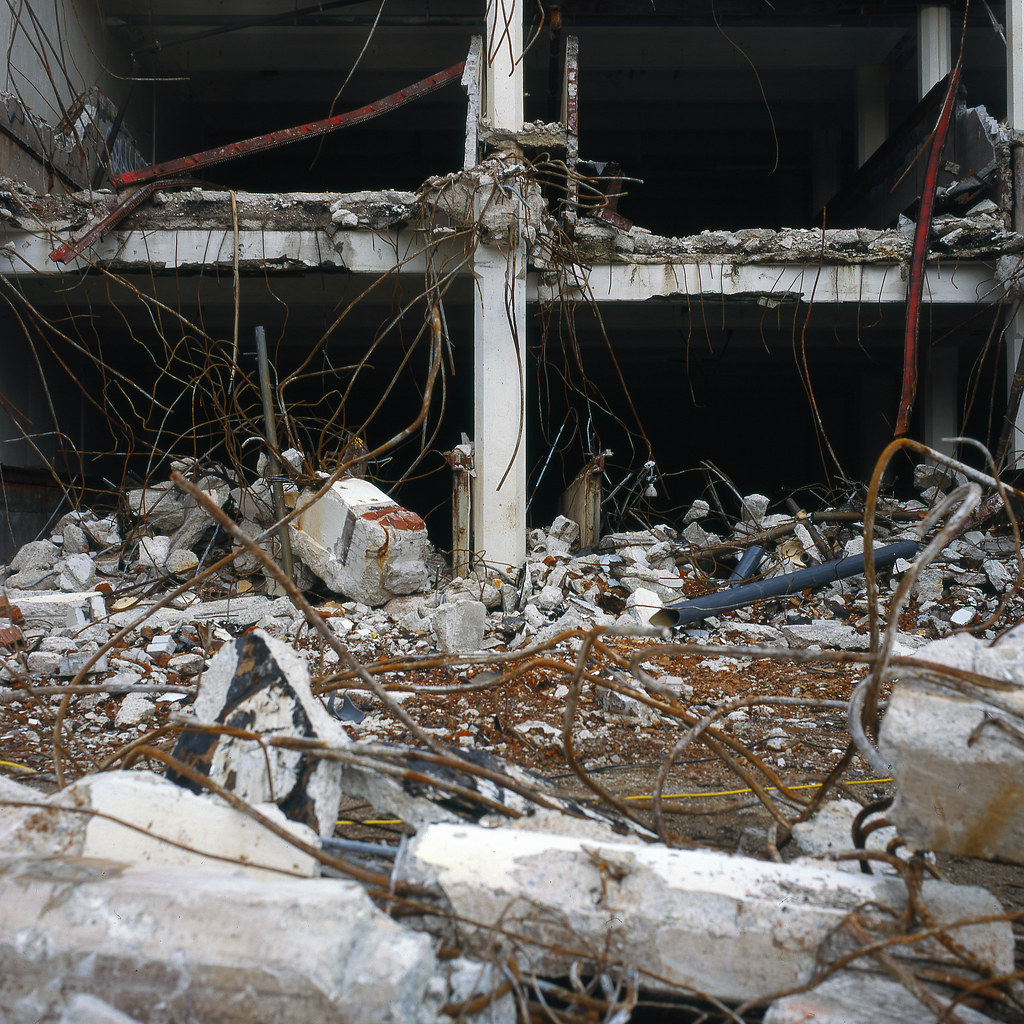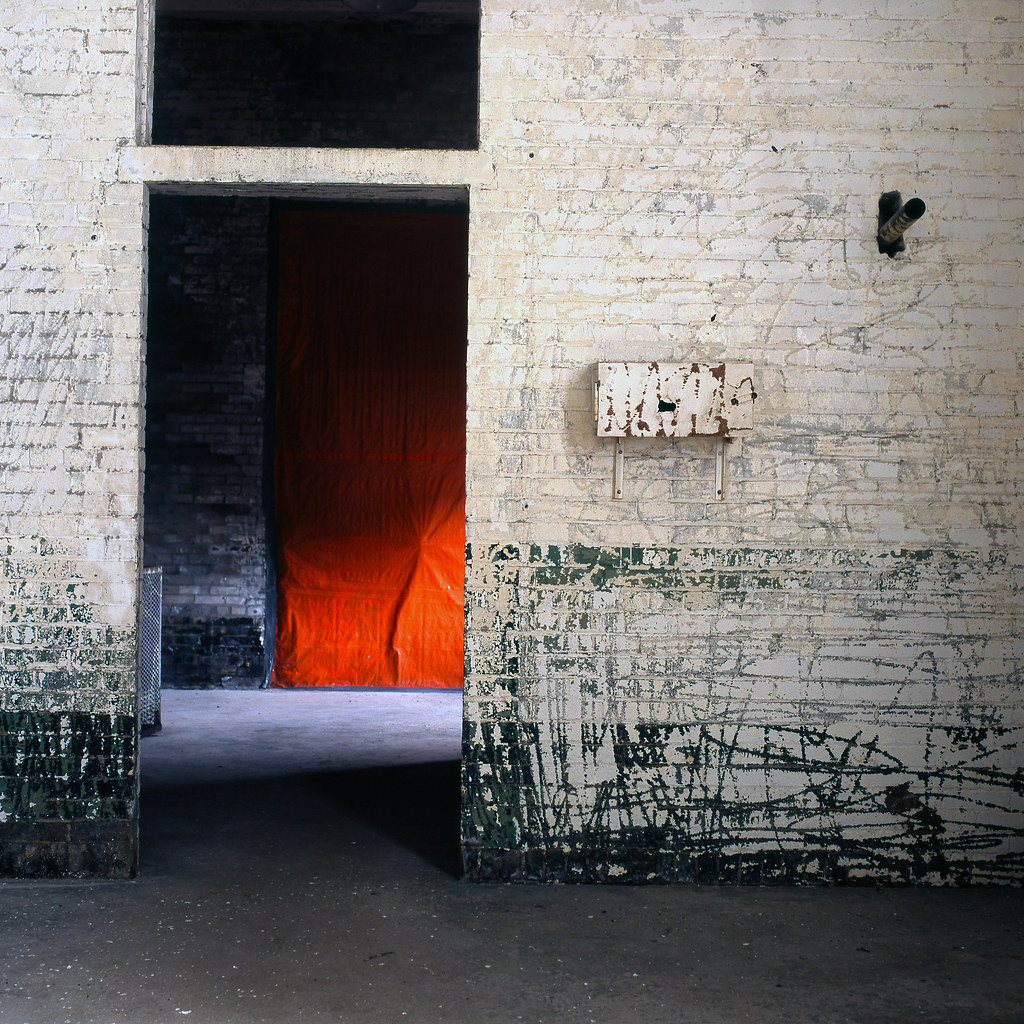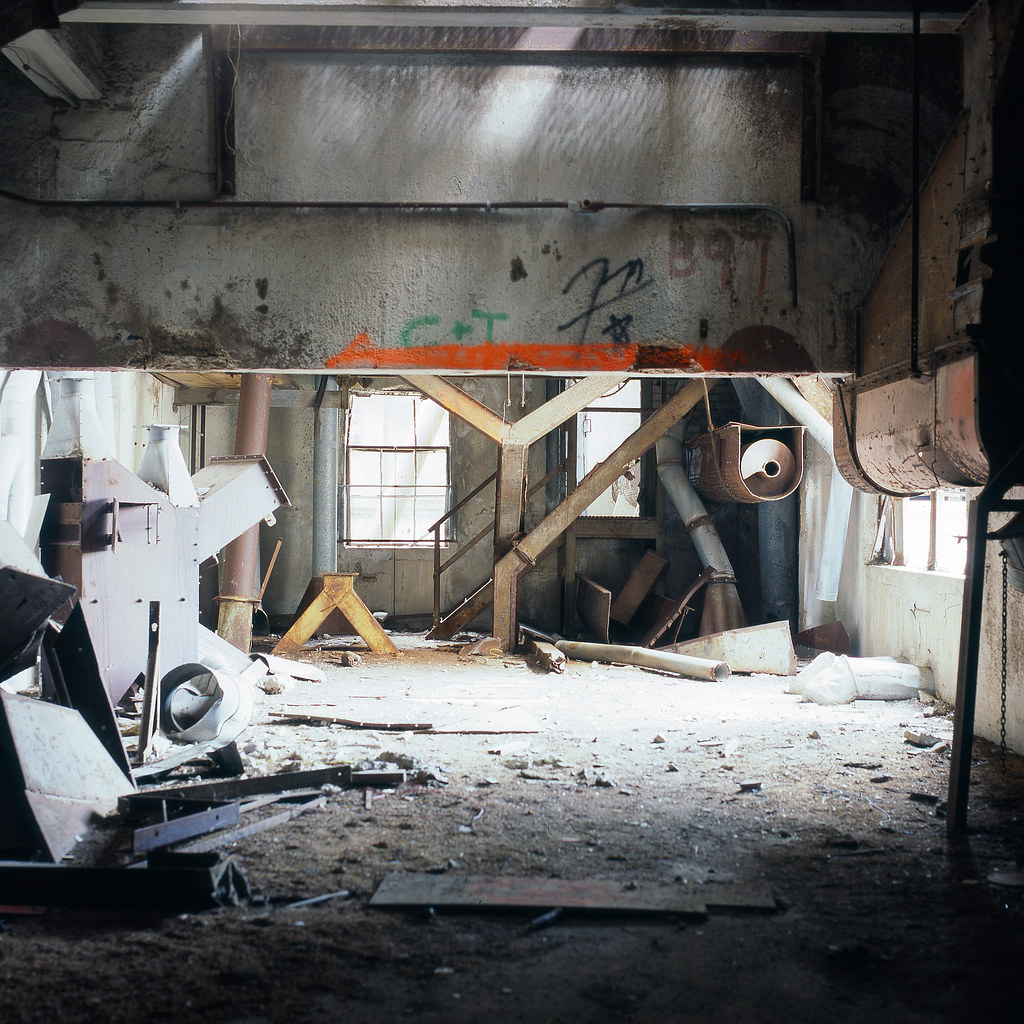The massive silos at the foot of Bathurst Street caught my attention long before I started going into abandoned buildings; I actually feel that these silos and a set of abandoned houses on Derry Road near Pearson Airport (long demolished now) are what first drew me into the world of Urban Exploration and the natural curiosity to see what was behind those closed doors and boarded up windows. I also vaguely remember seeing figures up at the tallest point one night coming back from a Blue Jays game. Either way, the Canadian Malting Company silos in Toronto were one of the grail locations for many urban explorers in Toronto and those who visited the city for the hobby. One of three locations, the others being Hearn and the Don Valley Brick Works, that were the earliest core of the community hangouts. It took a lot of effort to get into the silos, and it also was the focal point of local drama regarding access. The head house tower offered up some fantastic views of the city skyline.

Nikon D70s – AF-S Nikkor 18-70mm 1:3.5-4.5G DX
The Canadian Malting Company officially took that name in 1902. However, it traces itself back to a malting and brewing operation in Kingston, Ontario, that formed in 1832 and officially became the largest operation in Canada, Morton’s Brewing & Malting, in 1844. From 1904 to 1913, Canada Malting Company Ltd opened up new malt houses and silos in Montreal, Winnipeg and Calgary. It was in 1928, twenty years after the last 19th Century silo was destroyed by fire that the new Toronto Malt House opened. The Toronto silos were designed and built by John S. Metcalfe and followed the modern idea of function over form. Constructed of concrete, the plant consisted of fifteen silos, a malt house, a germination building, a head house and offices. Positioned on Toronto Harbour, lake freighters could quickly load and unload their shipments and access North America and worldwide markets. When World War Two opened, Canada Malting Co transitioned to supplying foodstuffs and war-time alcohol, requiring a new fourteen silo expansion and offices built at the Toronto plant. Although further expansion would prove limited in the space, the silos had in Toronto. A new massive Thunder Bay location opened in 1947 and was expanded in 1957. New silos were completed in 1970 in Montreal to replace the original building. Between the new silos in Montreal and Thunder Bay, the smaller locations were starting to be redundant. Winnipeg closed first in 1984 and then Toronto in 1987.

Nikon D300 – AF-S Nikkor 14-24mm 1:2.8G
Nikon D300 – AF-S Nikkor 14-24mm 1:2.8G
Nikon D300 – AF-S Nikkor 14-24mm 1:2.8G
Nikon D300 – AF-S Nikkor 14-24mm 1:2.8G
Nikon D300 – AF-S Nikkor 14-24mm 1:2.8G
The City of Toronto were quick to slap a heritage designation on the Toronto Silos after their closure and the loss of the Maple Leaf Silos in 1983. The heritage designation prevented the planned demolition of the silos but did little to preserve or make use of the massive industrial site. The area around the silos quickly moved away from industrial to a more commercial and residential neighbourhood. The silos became a target for the growing Urban Exploration community. Also, they were a source of shelter for the unhoused. In 2000 the City Council approved a plan by Metronome Canada to restore the silos and build a local history and music museum. These plans would never materialise and fall apart in 2004. In 2007, the city dedicated Ireland Park at the base of the silos and home to the Haunting Irish Famine Memorial. The memorial is a twin with one in Dublin, representing those fleeing Ireland. The one in Toronto is short one figure representing those lost on the voyage. It was not until 2010 that a new set of plans were completed to make better use of the space, and in order to better use the land, the Malt House, Offices, and Germination Building were demolished, leaving only the silos. Construction on a new ferry and taxi terminal for Billy Bishop Airport was completed. In 2017, a three-phase reconstruction plan saw approval. As part of the project’s first phase, a new waterfront promenade started construction in 2019. The second phase began in 2021 with the construction of a new art centre called the Corleck Building. The third and final phase, the restoration and reuse of the silos, started in 2023 with a planned completion date of fall of this year. Canadian Malting Company Ltd still operates today; they are headquartered in Calgary, Alberta and expanded the silos in Calgary in 1992; they purchased several grain and barley silos in 2002 and continue to have a commitment to the craft brewing and distilling industry across the world. The 1906 silos in Montreal still stand and remain a focal point of the Urban Exploration Community.

Kiev 88CM – Biometar 80mm 1:2.8 – Fuji Velvia @ ASA-50 – Processing By: Silvano’s
Kiev 88CM – Biometar 80mm 1:2.8 – Fuji Velvia @ ASA-50 – Processing By: Silvano’s
Kiev 88CM – Biometar 80mm 1:2.8 – Fuji Velvia @ ASA-50 – Processing By: Silvano’s
Kiev 88CM – Biometar 80mm 1:2.8 – Fuji Velvia @ ASA-50 – Processing By: Silvano’s
Kiev 88CM – Biometar 80mm 1:2.8 – Fuji Velvia @ ASA-50 – Processing By: Silvano’s
The biggest challenge with accessing the Malt Plant was getting inside; even getting past the fence could be challenging. It’s probably why I only went three times total: twice when it was intact and the third and final time after the demolition of the exterior buildings had started. Positioned on the lakeshore, it also proved a somewhat visible location, and the city had done an excellent job in making access difficult but never impossible. But once you got past the fence, often with the aid of life-saving equipment (which also made access iffy; you needed to bring the ladder and then hope that no one noticed the ladder hanging off the fence), access to the plant itself was never guaranteed. And even getting over the fence became difficult after a while with some anti-climb updates were put in place. Once past the fence, you got into the courtyard; from here, there were a couple of ways to bring into the plant itself; the obvious choice was the door, which quickly became the source of some local drama. While the city did secure the door, explorers took turns cutting off the lock, putting a lock on the door and handing out keys to friends. Those without keys would cut off that lock and put on another. The battle went back and forth before the city permanently sealed the door. That was one of many doors, and if you had someone who could climb, get in another window, and open another door from the inside. The Malt plant, for the longest time, despite being popular, had limited access. That said, my first trip proved terrific; it was late at night and long before the significant condo boom hit Toronto, and the views from the tallest point were incredible. It also proved helpful in defeating my fear of heights. You have to overcome that if you’re going to crawl up on a tiny space with only three knee-height walls. Not to mention navigating the ladders to get up and down from that space. Creeping around at night also proved dangerous, given the state of the plant and the need to practice good light discipline. The second trip was during daylight hours, and while a little more risky, it was a chance to get better views of the plant and the interior without worrying as much about falling through holes. In the end, that trip resulted in a Pentax ME Super getting knocked and falling down into a silo. It would end up being another three years before I got back in again, and that was during the demolition. That proved the easiest but still dangerous, climbing through a hole in a fence and over the rubble. But that final trip proved to be the most fun and most successful regarding photography.

Nikon D300 – AF-S Nikkor 14-24mm 1:2.8G
Nikon D300 – AF-S Nikkor 14-24mm 1:2.8G
Nikon D300 – AF-S Nikkor 14-24mm 1:2.8G
Nikon D300 – AF-S Nikkor 14-24mm 1:2.8G
Nikon D300 – AF-S Nikkor 14-24mm 1:2.8G
Photographing the Malt Plant was an interesting one, given the small size of the plant, especially in the central tower. You were always trying to balance between details and vast openness. You also had to work around some of the other explorers and the nature of the plant, which had several holes that made for potential fall hazards. That said, the first trip had a lot of rather lovely images that I produced using both my D70s and my F80 on Kodak Portra 400VC film. Inside the plant, I focused on the details, while once I got out onto the roof, I switched to the F80 and nabbed some amazing skyline shots. These also presented a window into history as they were shot in 2007 as the condo boom in downtown Toronto was getting started; in fact, in one of my favourite shots from that first trip, you can see towers starting to go up, and some are already completed. That view is no longer present in the city. I was rocking a proper ultra-wide angle lens for my crop-sensor D70s by the second trip. Also, I got into the other sections along the top of the silos. I was starting to use the ultra-wide format, so my compositions had something to be desired. I got some better exterior shots on my way out, but I lost a camera and the film inside. The final trip resulted in the most significant number of shots I got in my past two trips combined. It helped that because the demolition started, I had greater access to other plant sections, plus I had figured out a lot in 2010. My D300 and 14-24mm lenses were a fast favourite, and better yet, understanding how to best compose my shots. Not only that, but I made heavy use of film, shooting two rolls of slide film through a Kiev 88CM, which is a Soviet copy of the iconic Hasselblad line of cameras. Most of the images you see in this post are from that third trip, as they are among my favourite and best from the entire plant. Mainly because I had figured out my composition with the digital format and the 6×6 format outputted by the Kiev. What impressed me more was that I matched cleanly enough for both Astia 100, which has a lot of forgiveness for a slide film, and Velvia, which does not have a lot of latitude.

Kiev 88CM – Biometar 80mm 1:2.8 – Fuji Astia 100F @ ASA-100 – Processing By: Silvano’s
Kiev 88CM – Biometar 80mm 1:2.8 – Fuji Astia 100F @ ASA-100 – Processing By: Silvano’s
Kiev 88CM – Biometar 80mm 1:2.8 – Fuji Astia 100F @ ASA-100 – Processing By: Silvano’s
Kiev 88CM – Biometar 80mm 1:2.8 – Fuji Astia 100F @ ASA-100 – Processing By: Silvano’s
Kiev 88CM – Biometar 80mm 1:2.8 – Fuji Astia 100F @ ASA-100 – Processing By: Silvano’s
It’s been a long time since I thought about the Malt Plant in Toronto. I remember seeing photos online of a party at the Montreal Plant a few years ago. It has also been a long time since I have even been near the iconic silos. Mainly because if I’m in that part of Toronto, I’m at Fort York, but now that I’m learning about how the restoration of the property is almost complete, a return visit is in order. I made a point of seeing Lister Block after restoring the building. Probably later in the fall, I’ll create a point to go and notice how the old silos have been fixed. And maybe even take a trip out to see the Montreal silos again, as they seem to be surrounded by a revitalised neighbourhood in Old Montreal. If you want to catch all my photos from the Toronto Malt Plant, you can check them out on Flickr.